Rock About: Rocks that Transform
With natural materials, fourteen sculptors produce an enticing exhibition: Rock About. Whether it is carving or assembling found stones, the exhibition is thematically intertwined: transformation of otherwise static and lifeless stone into meaningful artworks.
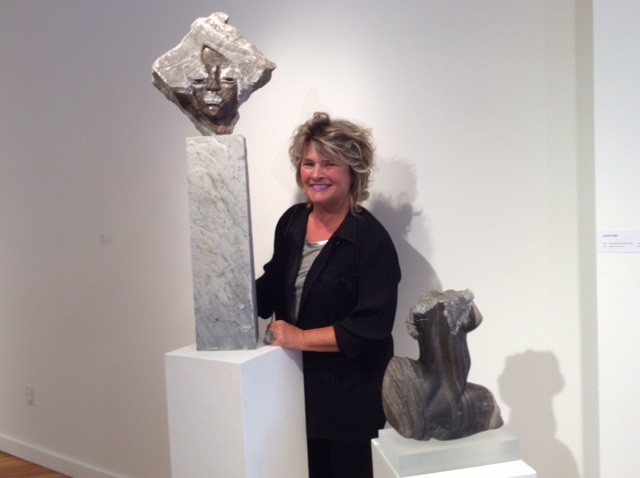 Elizabeth Merei with her sculptures Truth, Italian agate marble and Opus I, alabaster, acrylic base. Courtesy of Canadian Sculpture Centre
Elizabeth Merei with her sculptures Truth, Italian agate marble and Opus I, alabaster, acrylic base. Courtesy of Canadian Sculpture Centre
Mary Ellen Farrow completely transforms a piece of Indiana limestone into a witty piece entitled “why knot”. Two bands wrap around the lower and upper parts of the sculpture forming a knot, hence, the name. While conforming to the original qualities of the stone, Farrow produces an abstract sculpture with rhythm and movement. As the body of the sculpture moves upward like a flickering flame, the bands counteract creating X-shapes. Completely polished and refined, the sculpture appears artificial and man-made. Yet, Farrow’s goal is just that. She transforms a motionless and static rock into a tactile and rhythmic piece, which in turn, elicits the viewers to react and ponder on the meaning behind the work.
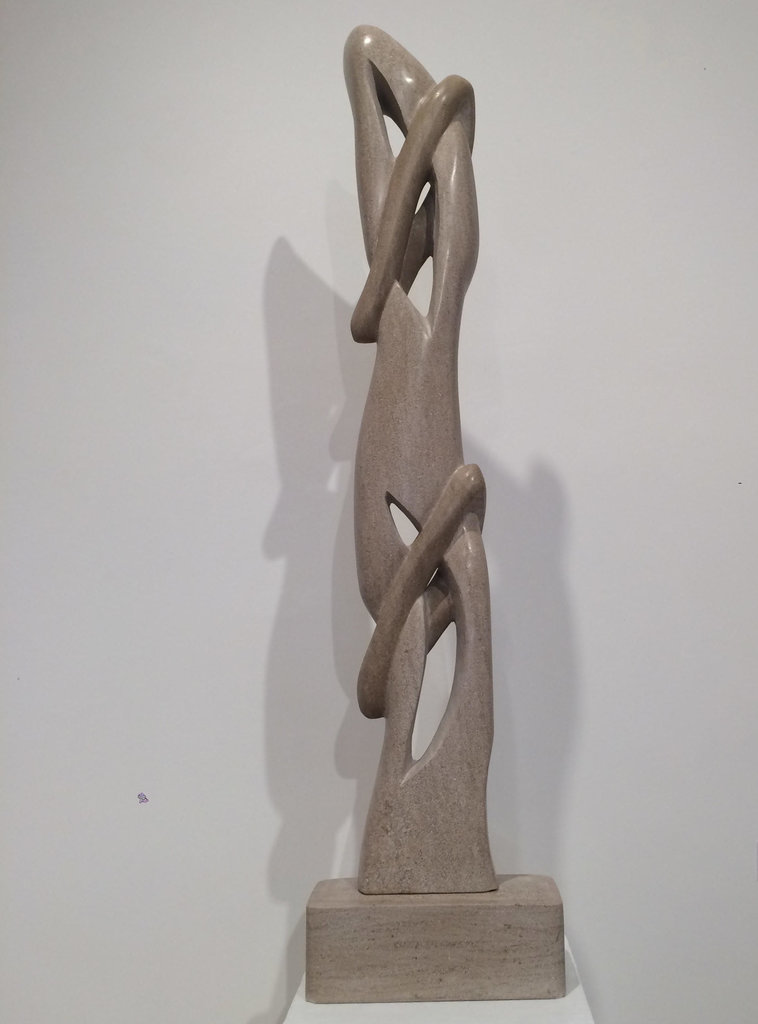 Mary Ellen Farrow, why knot, Indiana limestone. Photo: Katerina Bong
Mary Ellen Farrow, why knot, Indiana limestone. Photo: Katerina Bong
Mary Cartmel sculpts two tangoing birds from a green Brazilian soapstone. Unlike Farrow’s abstracted works, “Tango” depicts the natural wildlife. Two birds adjoin the tip of their wings to tango. Their heads lean backward to create an elongated and dramatic gestures. The image of birds tangoing is an artifice – it is a human invention and imagination. This man-made transformation captures the sculptor’s intention. She wanted to capture a moment in which a stone isn’t or cannot be. Birds are light and always moving contrary to a static and inanimate rock. She wanted to depict such a profound dichotomy in her works. In order to create her works, she does not create preliminary sketches, rather bases the design on her spontaneity and intuition. Due to the soft nature of the soapstone, she can work with hand tools in close proximity with the rock. By pushing the limits of stone, the final product is light and playful.
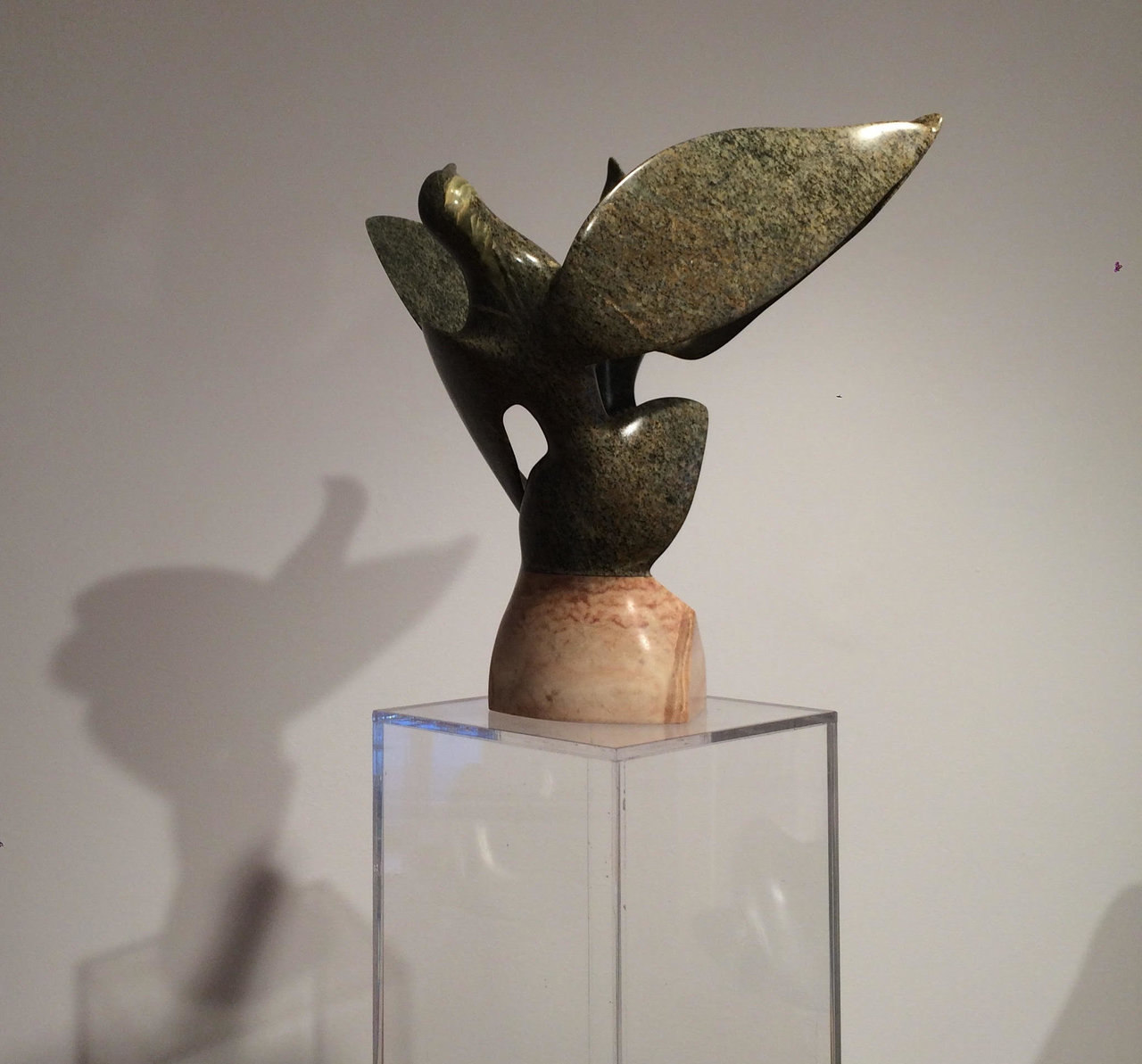 Mary Cartmel, Tango, green Brazilian soapstone. Photo: Katerina Bong
Mary Cartmel, Tango, green Brazilian soapstone. Photo: Katerina Bong
This sneak peek at these two sculptures from the exhibition offers an insight to the idea of transformation. They use insignificant and static stones to give them new meaning. Like Farrow and Cartmel, the other sculptors are not mere artists, they are inventors.
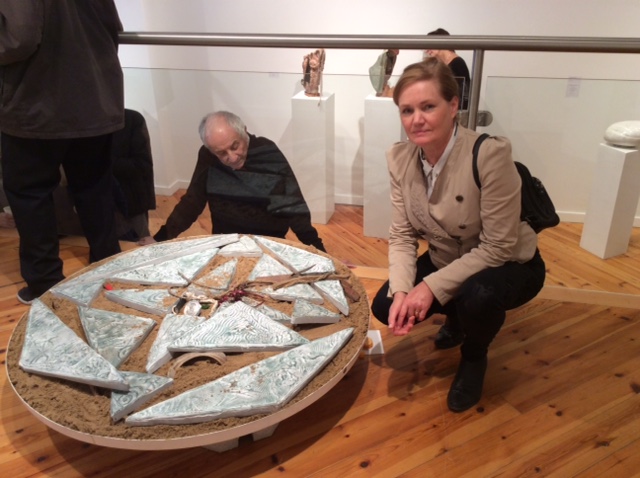 Andy Berg with Aqua, cast stone, mixed-media. Courtesy of Canadian Sculpture Centre
Andy Berg with Aqua, cast stone, mixed-media. Courtesy of Canadian Sculpture Centre
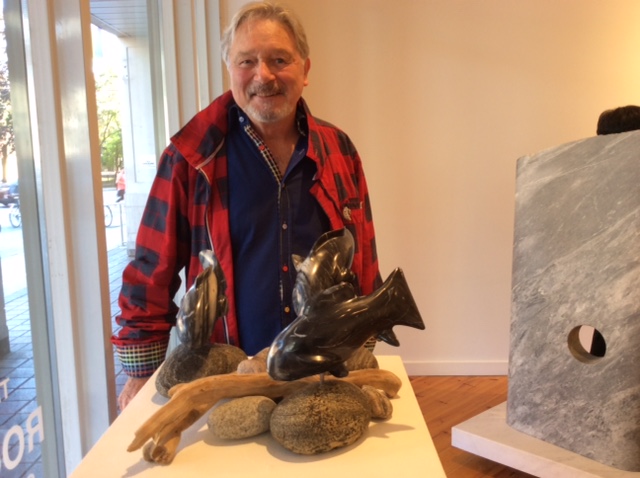 Fred Hummel and his work: With the Flow, installation, marble, steel, found stones. Courtesy of Canadian Sculpture Centre
Fred Hummel and his work: With the Flow, installation, marble, steel, found stones. Courtesy of Canadian Sculpture Centre
Katerina Bong
*Exhibition information: October 13 – November 4, 2016, Canadian Sculpture Centre, 500 Church Street. Gallery hours: Tue – Fri: 12 – 6, Sat: 11 – 4 p.m.
